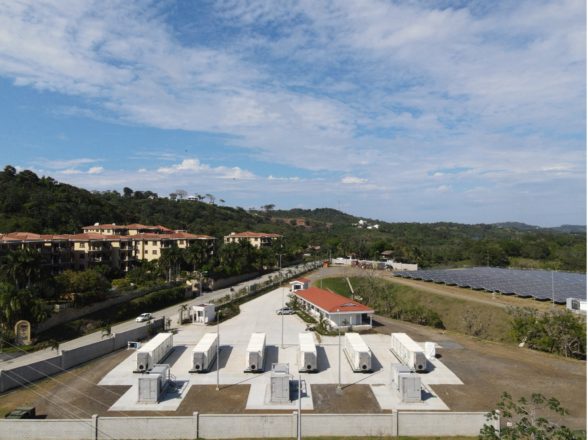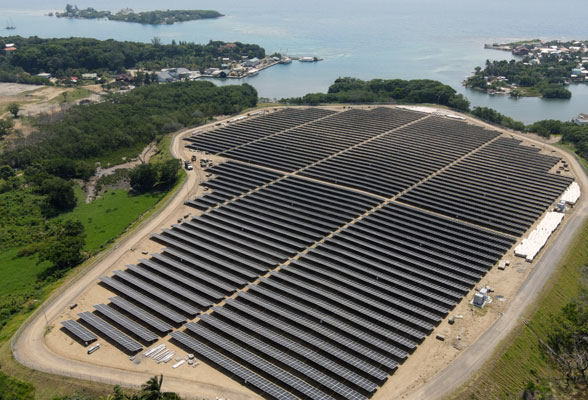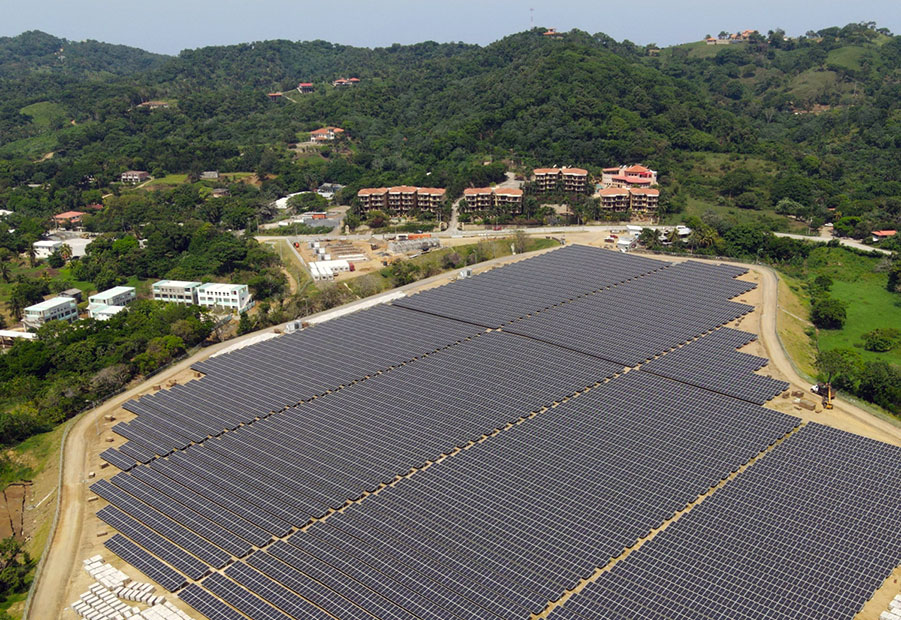Project Spotlight
Roatan, Honduras
Bringing clean power to the Caribbean via a 10 MW / 26 MWh energy storage system
Flexible power generation technology answers Honduras island’s energy demands
Storage technology optimises engine plant performance and facilitates renewables integration.
A major sustainable energy transition is happening in the Caribbean. Heavy fuel-based economies and vulnerability to extreme weather see the region pushing for greater resiliency and energy security. Upgrades to existing infrastructure are supporting the increased demand for energy capacity brought by tourism. So is the case off the northern cost of Honduras on the island of Roatan, where a robust sustainable energy investment strategy is accelerating the region’s clean energy transition.
Main Data
| Customer | Roatan Electric Company (RECO) |
| Site Size | 10MW / 26MWh |
| Site Location | Roatan, Honduras |
| Applications | Renewables integration Engine+ Grid reliability Island grid |
| Delivery | 2020 |

Modern power system with flexible energy solutions
Progressive and environmentally conscious Caribbean utility Roatan Electric Company (RECO) is leading that change. Since 2015, which saw the installation of the island’s first wind power plant, the utility has been upgrading its existing power system to operate to maximise efficiency and integrate renewables at a large-scale. The island’s 3.9 MW wind farm, 12 MW of solar PV, 28 MW Wärtsilä power plant with four 34SG engines running on LPG, and a nine-kilometer underwater subsea cable, are all examples of how RECO is introducing flexible power generation to effectively absorb current and future system load variations. The result: clean power, and expanded distribution network to two nearby islands.

Storage tech optimises engine plant performance and facilitates renewables integration
Existing operational and infrastructure challenges are related to high energy costs and fuel consumption as well as other difficulties associated with operating an isolated distribution grid, has spurred a renewables shift for Roatan.
Wärtsilä’s solution was an energy upgrade—including a new 10 MW / 26 MWh energy storage system and advanced control platform—that introduced flexibility into the local Roatan grid. While the batteries secure reliability by eliminating the need for mechanical spinning reserve, Wärtsilä’s sophisticated GEMS energy management software controls Roatan’s entire energy system, including enhancing earlier delivered Wärtsilä engines and solar panels. GEMS provides data visibility into the entire system, including load forecasting, and has enabled the optimisation of the (load) data and system assets. GEMS also enable the further integration of intermittent and variable solar and wind resources into the existing grid.
These energy optimisation capabilities have increased the reliability of the system, as well as prepared the Roatan hybrid power system for a shift to large-scale renewables integration. It is expected that by the end of 2021, more than 20% of the delivered island energy will come from renewable sources.
Watch
Artificial Intelligence for 100% Renewable Energy
In the race towards 100% renewable energy, islands will show us the way, and machine learning will play a key role. Learn more about how AI is supporting energy optimisation on island grids.
Challenge
Wärtsilä's Solution
Benefit
Secure energy reliability in extreme weather and for an island grid with fluctuating energy demands.
Smart energy storage system that provides virtual spinning reserve capacity to maintain the stability of the grid, particularly important for the energy security of an island grid.
Storage and GEMS bring grid flexibility and enable further renewables integration into the local grid.
Introduce the quick dispatch of back-up (thermal) generation via an advanced control system.
Tertiary control of GEMS energy management platform that optimises the entire hybrid system, including existing power plant with Wärtsilä engines, as well as solar PV and wind.
Increased grid reliability and a reduction in blackouts has resulted in considerably more investment towards improving the infrastructure on the island in general.
Facilitate the integration of more renewables into the grid and seamless synchronisation and optimisation of these intermittent assets.

We greatly appreciate Wärtsilä’s support in arranging fast delivery of this energy storage system. Electricity demand continues to increase on the island, and by integrating energy storage to our already efficient engine power plant, we will be better placed to meet this demand and ensure grid stability. The energy storage will allow the further integration of intermittent and variable solar, wind and other future resources into the existing system. Increased grid reliability is an important factor for investors.”